Top Facts
- There are two separate petitions to save the Streets of Old Milwaukee and the adjacent European Village, which is the part of the exhibit where you can look into the houses of different cultures.
- The Milwaukee Public Museum has admitted the exhibits will change, but has been vague about how much of them will be retained. It is planning a new $240 million museum.
- The people creating the petitions have emotional ties to the exhibits, as do many people in Milwaukee and the surrounding area, who visited them as kids. They all stressed that they want all cultures included in the museum, but they don’t want this piece of history destroyed.
- They say the museum has not been transparent with the public and is not appreciating the emotional connection many have to the exhibits, as well as their historical and artistic value to the community. They also question whether a new museum is needed in the first place.
Two petition drives started by concerned citizens are seeking to save the Streets of Old Milwaukee and its related exhibit at the Milwaukee Public Museum, the European Village. The streets flow into the European village, which is the part of the exhibit where you can peek inside the homes of people representing various cultures.
Julia Brunson, who started the Streets of Old Milwaukee petition, grew up in the Streets of Milwaukee; her babysitter would take her to play there every week as a kid. Alexandra Hahnfeld and her sisters Demitra Hahnfeld and Natalia Kulas have a family connection to the European Village they are trying to save; their grandfather, Dr. Lazar Brkich, was a curator for the exhibit, a Serbian immigrant to Milwaukee who painstakingly researched and selected many of the artifacts in it.
All of the women said they are concerned by what they believe is a lack of transparency by the museum over what will happen to the beloved exhibits.
“Prove to us you did your due diligence,” Brunson said. “I’m disappointed in the transparency and presentation of this project to the people.”

Sign the Streets of Old Milwaukee petition here.
Sign the European Village petition here.
“The European Village is an imaginative re-creation of carefully selected examples of homes and shops as they may have appeared about 1875 to 1925,” the museum explains.
Natalia Kulas called the European Village “a treasured piece of our city.”
Demitra Hahnfeld noted that the museum “itself is history.”
The sisters said they were told by museum officials that the European Village’s artifacts would either “go in storage or go to other museums” if the exhibit is not in the new museum, but they weren’t given a straight answer about whether it would be.
The Streets of Old Milwaukee “created one of the first walk-through dioramas in the world, transporting the visitor back to a fall evening in Milwaukee at the turn of the 20th century,” according to the museum, highlighting “some 30 shops, businesses, eating and drinking establishments.” That’s the part of the museum with the granny in a rocking chair.
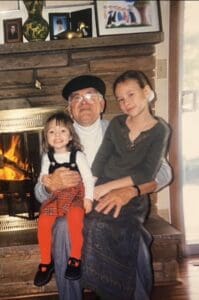
The museum has been vague about exhibits in the new museum, planning for which is underway.
“Deconstructing those in a way that won’t damage them and using those exact same materials to reconstruct them in a differently-shaped building would be nearly impossible, not to mention excessively expensive and time-consuming,” a statement from the museum read.
“What we can do is construct new built-ins that create the same immersive, engaging experience you know and love at MPM.” The museum has refused to say specifically what that will look like and how much of the old exhibits it will retain. [Wisconsin Right Now is currently doing a deep dive into the museum’s financials and other rationales for the move.]
The museum’s statement continued, “one of those exhibit galleries will be a highly-immersive walkthrough of Milwaukee that explores our marvelous city’s history, nature and cultures. It will not be called ‘Streets of Old Milwaukee’ as all exhibits are getting new names.”
Streets of Old Milwaukee Petition
There are actually several petitions to save the Streets of Old Milwaukee, but this petition by Julia Brunson has the most signatures, with more than 7,100 on January 21, 2023.
“MPM, a taxpayer-funded institution, has a responsibility to listen to the very people who have loved and used — and will love and use — their exhibits,” the Streets of Old Milwaukee petition says. “SIGN TODAY and join other Milwaukee residents in OPPOSING the dismantlement and LOSS of this great cultural exhibit.”
Julia Brunson, who started the Streets of Old Milwaukee petition, told WRN she was “shocked when I saw the news.”
When she saw the outpouring of anger and frustration on Facebook on the topic, she decided to start the petition, and it took off.
“The people in Milwaukee are upset,” she said. “I practically grew up on the Streets of Old Milwaukee.”
When she was growing up, her babysitter took her to the Streets of Old Milwaukee once a week to play in the exhibits and look in the windows. She would go to the candy shop or see the special events going on.
“We had the most magical times,” she said. “I would return as an adult, looking at the new exhibits, seeing the new things that were added. It felt so familiar.”
Brunson, who works in marketing and was a history major in college, said she understands “the push and pull between wanting something new and refreshed and wanting something true to the history and timeless.”
But she said the “magic of the current building is that it is out of time a little bit.”
See the Streets of Old Milwaukee here:
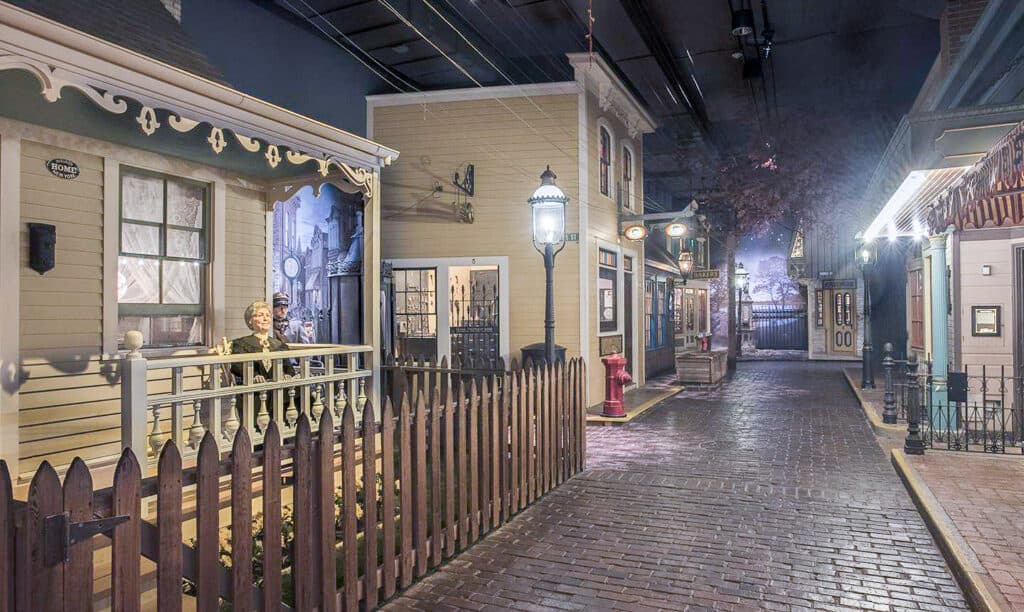
Brunson said it is a “time capsule style of museum that doesn’t exist anymore across America.”
Moving to a new building would have some benefits but would “lose a lot of those amazing qualities that are important to the original museum,” she said.
She is concerned by what she believes is a lack of transparency from the museum over why change is needed and what specifically is changing.
“If they are leaving the Streets of Old Milwaukee behind, tell the people,” she said. “We have a right to know. If you can’t tell us that, tell us why you can’t tell us that.”
Brunson said a lot of people in Milwaukee have a “huge investment” in the exhibit.
She thought the museum’s response was “tone deaf. That’s not how museums should talk to people.”
She said the financials are “vague, obscure.” She had to dig through articles to try to understand them.
Brunson hopes that people “read the comments in the petition and read the human stories of people who have been impacted by the Streets of Old Milwaukee and the European Village. People have been married on the streets. They met girlfriends there. They grew up there.”
“When we allow museums to forget that human element, it’s really disappointing,” she said.
European Village Petition
In an interview with Wisconsin Right Now, the sisters who are trying to save the European Village said that their grandfather Dr. Lazar Brkich was a Serbian immigrant to Chicago and then Milwaukee, who became the lead curator and director of the European Village exhibit in 1973.
They said his work included meeting with cultural groups and traveling to Europe to find artifacts to include in the houses. He also included artifacts from their family and his personal trips.
Alexandra Hahnfeld said that “everything in the Serbian house came from our family directly. He wanted to share his culture with fellow Milwaukeeans. So many European immigrants came to Milwaukee.”

Their grandfather was “always very into the belief that our state and city was a melting pot,” she said. “He wanted to represent that.” She said the exhibit has “continued to expand and develop as time goes on.”
She started the petition with her sisters, saying, of the European Village and Streets of Old Milwaukee, “It would be a shame to not include them in the new museum.” She said the sisters have been moved by how much people care about the exhibits.
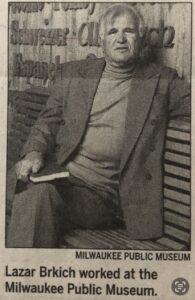
She said they “all tried reaching out to the museum” recently and received no response.
“The most important thing to us is keeping the history alive,” she said. “We kind of want to make it known many folks really enjoy the exhibits as they are.”
According to the museum, the Village “represents the buildings and other structures re-created to scale and furnished–of 33 cultures, including: Austrian, Belgian, Bulgarian/Romanian, Croatian, Czech, Danish, Dutch, English, Estonian, Finnish, French, German, Greek, Hungarian, Irish, Italian, Jewish, Latvian, Lithuanian, Norwegian, Polish, Portuguese, Russian, Scottish, Serbian, Slovak, Slovene, Spanish, Swedish, Swiss, Ukrainian, and Welsh.”
The sisters said the two exhibits and all of the artifacts in them are “cohesive,” and the meaning derives from how it all works together.
“It’s the kind of thing you can’t find anywhere else; the cobblestone pathway, looking through the windows to see each culture. You’re immersed in a time that no longer exists,” Alexandra said.
“It’s literally one of a kind,” added Demitra Hahnfeld. They underscored how much effort and care went into creating it.
“People are angry at the lack of transparency of the museum,” said Alexandra. “The museum is not being fully transparent. People don’t like dishonesty.” She encouraged the museum to be “more straightforward” about its plans for the two exhibits.
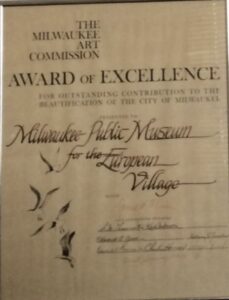 Last spring, when the sisters realized a new museum was in the works, they reached out to museum officials and asked if they were destroying the European village, saying they would like some of the family artifacts back. They were told that isn’t possible and weren’t given a clear answer about what will happen to the European Village.
Last spring, when the sisters realized a new museum was in the works, they reached out to museum officials and asked if they were destroying the European village, saying they would like some of the family artifacts back. They were told that isn’t possible and weren’t given a clear answer about what will happen to the European Village.
The sisters stressed that they believe that there should be a space in the museum for every type of ethnic culture that contributed to Milwaukee. Their grandfather passed away in 2010.
“I feel like new and museum are two words that don’t go together,” Alexandra said. She said the new building “looks cool but it doesn’t look like a museum. A futuristic museum doesn’t make sense to me.”
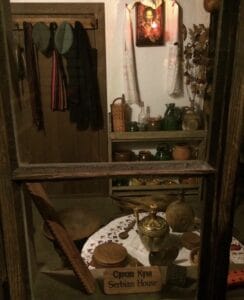
The sisters believe the museum could use some refreshing but don’t understand why that can’t be done with some renovations to the old one.
“I would like a better estimate, an itemized receipt to prove it’s too expensive to repair the current facility,” Alexandra said. “I would prefer not even have the new museum.” She said the museum is taking money from taxpayers without fully listening to their concerns. She said it irritated them how the museum was “wording things, dancing around things.”
They said their grandfather fought guerrilla warfare against Communist and fascism as a teenage soldier before ending up in a displaced refugee camp.
Table of Contents
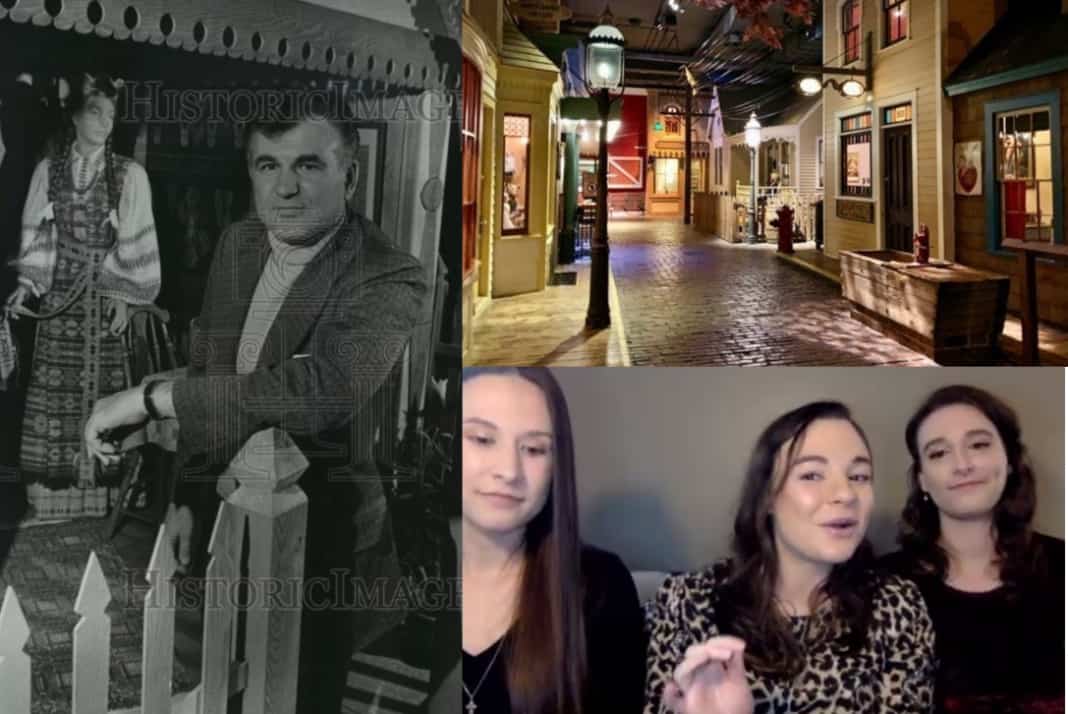


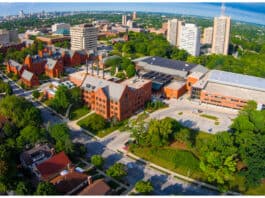




![Mandela Barnes Said ‘Reducing Prison Populations is Now Sexy’ [VIDEO] Reducing Prison Populations is Now Sexy](https://www.wisconsinrightnow.com/wp-content/uploads/2022/09/Collage-Maker-14-Sep-2022-11.44-AM-265x198.jpg)



